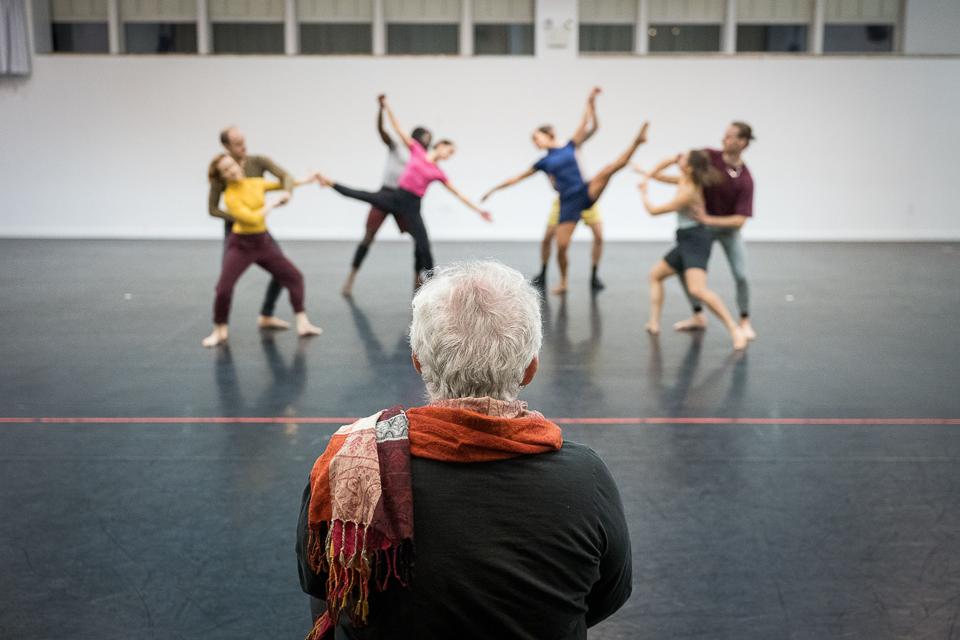For as long as humans have stared at the night sky, the moon has been a source of wonder, myth and inspiration. Acclaimed choreographer Mark Morris has turned that fascination into movement with a new dance piece that explores why Earth’s luminous satellite has such an enduring pull on our collective imagination.
Appropriately titled Moon, the work gets its world premiere on Friday at New York’s Kennedy Center, a venue that has seen its share of earthly drama since President Trump installed himself as chairman in February. The center commissioned the dance piece for Earth to Space: Arts Breaking the Sky, its three-week festival of performances, exhibits and programs to celebrate space and the arts. The event began on March 28 and runs through April 20, aligning actors, astronauts, dancers, musicians, astronomers, engineers, poets and others to ponder the cosmos.
“The moon is credited with time and tide, fertility, power and romance,” Morris said in an email interview. “The desire to touch the moon and know about it has always driven us, as has the compulsion to make contact with potential beings on other heavenly bodies.”
That deep sense of curiosity infuses “Moon,” as dancers spin, soar, transform into star-like formations and extend their arms and gazes upward as if asking the universe what mysteries it holds.
Where Did Morris Find Inspiration?
In addition to creating over 150 works for the Mark Morris Dance Group, which he formed in 1980, Morris conducts orchestras, directs opera and choreographs for ballet companies worldwide. When creating the 60-minute piece on the silver sphere, he drew inspiration from a variety of audio, visual and textual sources.
He listened to what he called “endless songs about the moon.” He studied images from NASA, the National Air and Space Museum and the Library of Congress. He watched the 1955 Disneyland cartoon “Man on the Moon,” which explores humans’ captivation with the moon through animation, and viewed Stanley Kubrick’s iconic 1968 sci-fi film 2001: A Space Odyssey.
He read Oscar Wilde’s one-act tragedy “Salome,” which presents the moon as a powerful female symbol. And he returned to W.H. Auden’s poem “Moon Landing,” in which, as The Paris Review notes, the poet appears “untouched by the sublime romance of the moon mission.”
The choreographer also looked to the famed Golden Record aboard Voyager in 1977. The 12-inch gold-plated copper disk contained images and sounds selected to give extraterrestrials who might find it a view of life and culture on Earth. “It’s a perfect example of our curiosity and enormous ego,” Morris said.
For Morris, the moon isn’t just a celestial body with a cratered, rocky surface, but a symbol of human vision and yearning.
“I’m not doing a Ken Burns special. I’m interested in how the moon came to be our fall-in-love token, and the mystery and glamour of it,” said Morris, who The New York Times has hailed as “the most successful and influential choreographer alive, and indisputably the most musical.”
He hopes the piece will spark marvel in viewers — for the moon, and far beyond.
“All I want from an audience is for them to pay attention, turn off their phones, listen and watch. That’s already a big ask,” he said. “I have no agenda and no lesson to teach. I’d [like] people to talk about the show to one another with imagination, curiosity and bravery.”
Other offerings at the Earth to Space: Arts Breaking the Sky festival include showings of The Moonwalkers, an immersive film co-written and narrated by Tom Hanks that projects the stories of the Apollo missions in 360 degrees. Canadian astronaut Chris Hadfield — who famously bid farewell to the International Space Station with a rendition of David Bowie’s “Space Oddity” performed from orbit — will be among the musicians performing.
And an exhibit from international architecture firm Foster + Partners explores, through scale models, 3D-printed structures and immersive film, how designs for the moon and Mars can inspire sustainable solutions on Earth.
“It is our conviction that insights into the marvels of the universe can inspire action to protect our own planet,” The Kennedy Center said, “and that the arts can stimulate fresh thinking about the challenges that confront us.”





